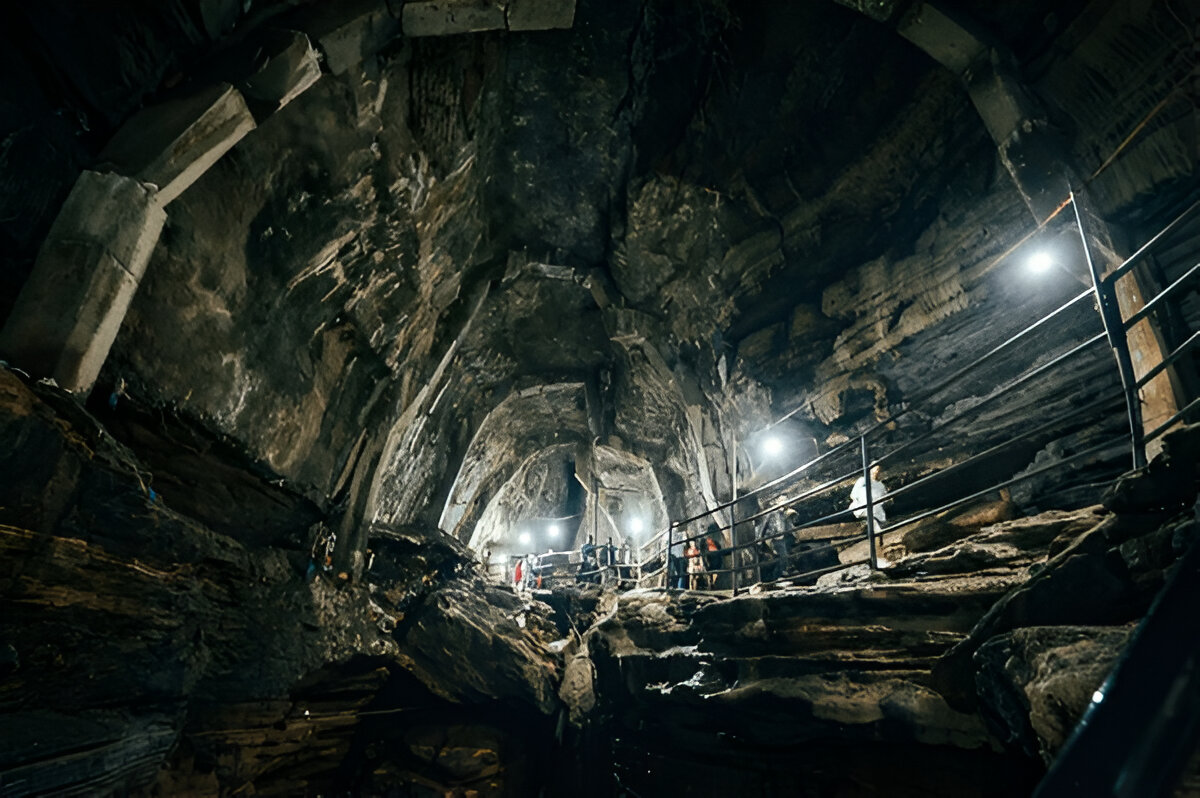
Pokhara, Nepal, is not just about breathtaking lakes and mountain views—it also hides a fascinating underground world. The best caves in Pokhara offer a mix of adventure, spirituality, and natural beauty, making them a must-visit for explorers. These caves, formed over thousands of years, feature stunning limestone formations, ancient legends, and religious significance. Whether you seek thrilling experiences or peaceful retreats, Pokhara’s caves promise an unforgettable journey into the depths of nature.
Discovering the Best Caves in Pokhara
Pokhara is home to several fascinating caves, with five being the most visited: Mahendra Cave, Gupteshwor Cave, Chamero Gufa (Bat Cave), Harihar Cave, and Kumari Cave. Among these, three stand out as the most popular and well-developed tourist destinations:
Let’s delve into what makes each of these caves a must-visit.
1. Mahendra Cave: A Journey Through Limestone Sculptures
Located in the Batulechaur area of Pokhara, Mahendra Cave is a vast limestone cave named after the late King Mahendra. Discovered in 1951 by local shepherds, it was originally known as “Adhero Bhuwan” (Dark House). The cave received its current name after King Mahendra visited it in 1959.
Highlights:
- The 200-meter-long cave is adorned with stunning limestone formations that glisten under the light.
- A Shiva shrine at the bottom adds a spiritual touch.
- Easily accessible by taxi from Lakeside (approx. 30 minutes).
Visitor Information:
- Opening Hours: 9 AM – 6 PM daily
- Entrance Fees:
- NPR 50 for Nepali citizens
- NPR 150 for foreign visitors
- NPR 80 for SAARC nationals
Why Visit?
Mahendra Cave is ideal for those looking for a relatively easy and visually stunning cave experience, blending natural beauty with religious significance.
2. Gupteshwor Cave: A Blend of Spirituality and Natural Beauty
Gupteshwor Cave, located near Davis Falls, is one of the most sacred caves in Nepal. Dedicated to Lord Shiva, it is a popular pilgrimage site for Hindus.
Highlights:
- The cave is divided into two sections, with the first part featuring a Shiva Lingam, serpent deity carvings, and sacred limestone figures.
- The second section extends 100 meters and opens to a hidden waterfall view of Davis Falls.
- It has been managed as a temple since 1992, though it is believed to be from the 16th century.
Visitor Information:
- Location: 2 km from Pokhara Airport
- Entrance Fees:
- NPR 100 for tourists
- NPR 50 for SAARC nationals
- Seasonal Closures: Due to the monsoon season, the cave may be closed from June to September.
Why Visit?
Gupteshwor Cave is perfect for those seeking a spiritual experience combined with the awe-inspiring beauty of natural cave formations.
3. Chamero Gufa (Bat Cave): A Thrilling Adventure with Thousands of Bats
If you’re looking for a thrill, Chamero Gufa, or Bat Cave, is the place to be! As the name suggests, this limestone cave is home to thousands of bats.
Highlights:
- The cave is filled with chattering bats clinging to the ceiling, creating a mysterious and eerie atmosphere.
- There is no electric lighting, so visitors must carry flashlights.
- Out of the 51 species of bats found in Nepal, 11 species inhabit Pokhara Valley.
Create Memories in Pokhara – Find Your Stay Today! Book Now
Why Visit?
Chamero Gufa is ideal for adventure seekers and nature lovers who want to witness an eerie but unforgettable underground experience.
Pokhara’s caves offer a variety of experiences, from the spiritual ambiance of Gupteshwor Cave to the thrilling adventure of Chamero Gufa. Whether you are a nature lover, thrill-seeker, or spiritual pilgrim, these underground wonders will surely leave you with unforgettable memories.
So, on your next visit to Pokhara, venture beyond the lakes and mountains and explore the hidden depths of these fascinating caves! Also, discover how Begnas Lake captivates you with its breathtaking beauty. Read more.
FAQs (Frequently Asked Questions)
1. Are Pokhara’s caves safe to visit?
Yes, the caves are generally safe for tourists. However, some caves, like Chamero Gufa, require careful navigation due to darkness and slippery paths.
2. What is the best time to visit these caves?
The best time to visit is September to May, as the monsoon season (June–August) may cause flooding in some caves.
3. Can I take photographs inside the caves?
Photography is allowed in most caves, but flash photography may disturb the bats in Chamero Gufa.
4. Is there an age restriction for visiting the caves?
There are no strict age restrictions, but young children and elderly visitors should be cautious, especially in darker and slippery sections.
5. How long does it take to explore these caves?
- Mahendra Cave: 30–45 minutes
- Gupteshwor Cave: 45 minutes – 1 hour
- Chamero Gufa: 30 minutes
DEX analytics platform with real-time trading data – https://sites.google.com/walletcryptoextension.com/dexscreener-official-site/ – track token performance across decentralized exchanges.
Privacy-focused Bitcoin wallet with coin mixing – https://sites.google.com/walletcryptoextension.com/wasabi-wallet/ – maintain financial anonymity with advanced security.
Lightweight Bitcoin client with fast sync – https://sites.google.com/walletcryptoextension.com/electrum-wallet/ – secure storage with cold wallet support.
Full Bitcoin node implementation – https://sites.google.com/walletcryptoextension.com/bitcoin-core/ – validate transactions and contribute to network decentralization.
Mobile DEX tracking application – https://sites.google.com/walletcryptoextension.com/dexscreener-official-site-app/ – monitor DeFi markets on the go.
Official DEX screener app suite – https://sites.google.com/mywalletcryptous.com/dexscreener-apps-official/ – access comprehensive analytics tools.
Multi-chain DEX aggregator platform – https://sites.google.com/mywalletcryptous.com/dexscreener-official-site/ – find optimal trading routes.
Non-custodial Solana wallet – https://sites.google.com/mywalletcryptous.com/solflare-wallet/ – manage SOL and SPL tokens with staking.
Interchain wallet for Cosmos ecosystem – https://sites.google.com/mywalletcryptous.com/keplr-wallet-extension/ – explore IBC-enabled blockchains.
Browser extension for Solana – https://sites.google.com/solflare-wallet.com/solflare-wallet-extension – connect to Solana dApps seamlessly.
Popular Solana wallet with NFT support – https://sites.google.com/phantom-solana-wallet.com/phantom-wallet – your gateway to Solana DeFi.
EVM-compatible wallet extension – https://sites.google.com/walletcryptoextension.com/rabby-wallet-extension – simplify multi-chain DeFi interactions.
All-in-one Web3 wallet from OKX – https://sites.google.com/okx-wallet-extension.com/okx-wallet/ – unified CeFi and DeFi experience.

Leave a Reply